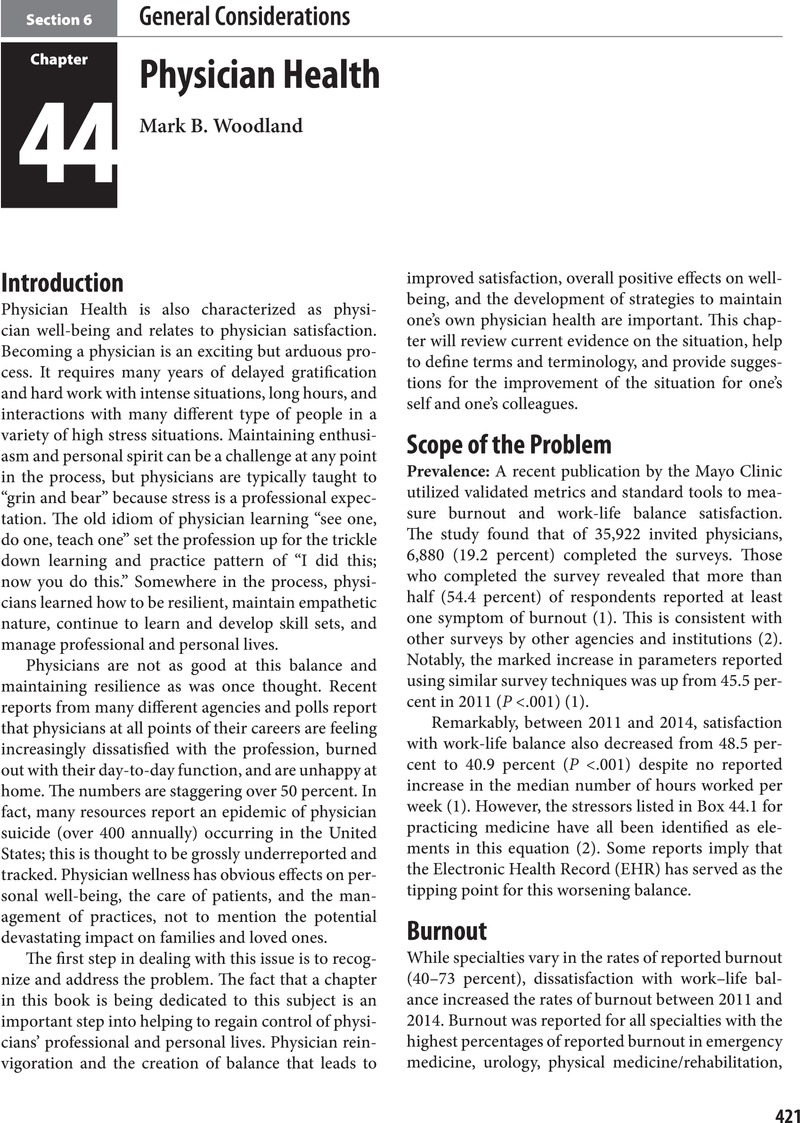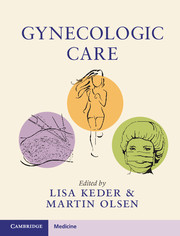Book contents
- Gynecologic Care
- Gynecologic Care
- Copyright page
- Dedication
- Contents
- Contributors
- Preface
- Section 1 Basic Gynecologic Care Issues
- Section 2 Gynecologic Surgery
- Section 3 Infertility
- Section 4 Urogynecology and Pelvic Floor Dysfunction
- Section 5 Gynecologic Oncology
- Section 6 General Considerations
- 38 Patient Safety in Gynecologic Care
- 39 Essentials of Practice Management
- 40 Ob-Gyn and the Law
- 41 Physicians and Healthcare Systems
- 42 Evidence-Based Medicine
- 43 Cultural Competency
- 44 Physician Health
- 45 Medical Ethics
- Index
- References
44 - Physician Health
from Section 6 - General Considerations
Published online by Cambridge University Press: 01 February 2018
- Gynecologic Care
- Gynecologic Care
- Copyright page
- Dedication
- Contents
- Contributors
- Preface
- Section 1 Basic Gynecologic Care Issues
- Section 2 Gynecologic Surgery
- Section 3 Infertility
- Section 4 Urogynecology and Pelvic Floor Dysfunction
- Section 5 Gynecologic Oncology
- Section 6 General Considerations
- 38 Patient Safety in Gynecologic Care
- 39 Essentials of Practice Management
- 40 Ob-Gyn and the Law
- 41 Physicians and Healthcare Systems
- 42 Evidence-Based Medicine
- 43 Cultural Competency
- 44 Physician Health
- 45 Medical Ethics
- Index
- References
Summary

- Type
- Chapter
- Information
- Gynecologic Care , pp. 421 - 429Publisher: Cambridge University PressPrint publication year: 2018



